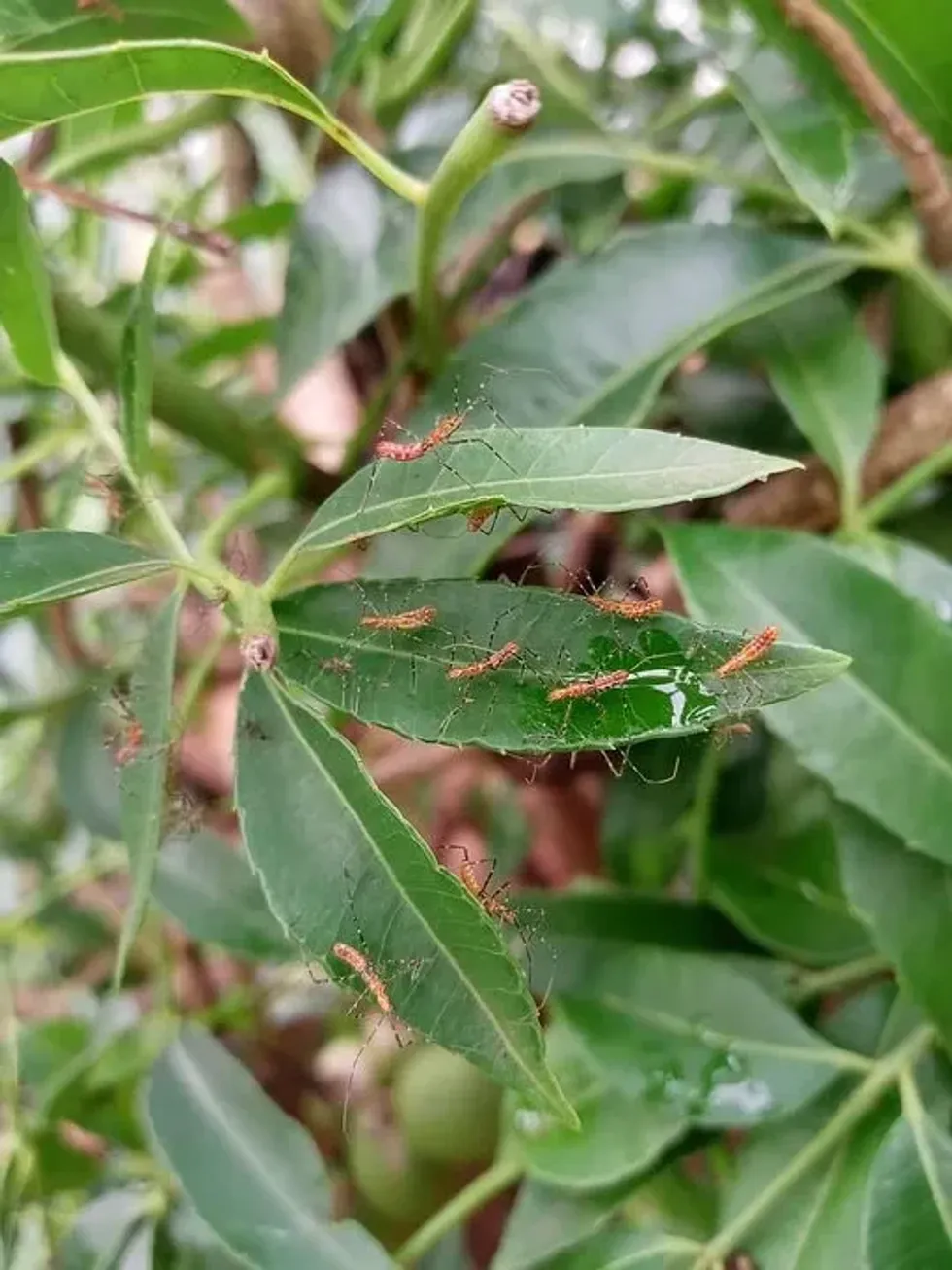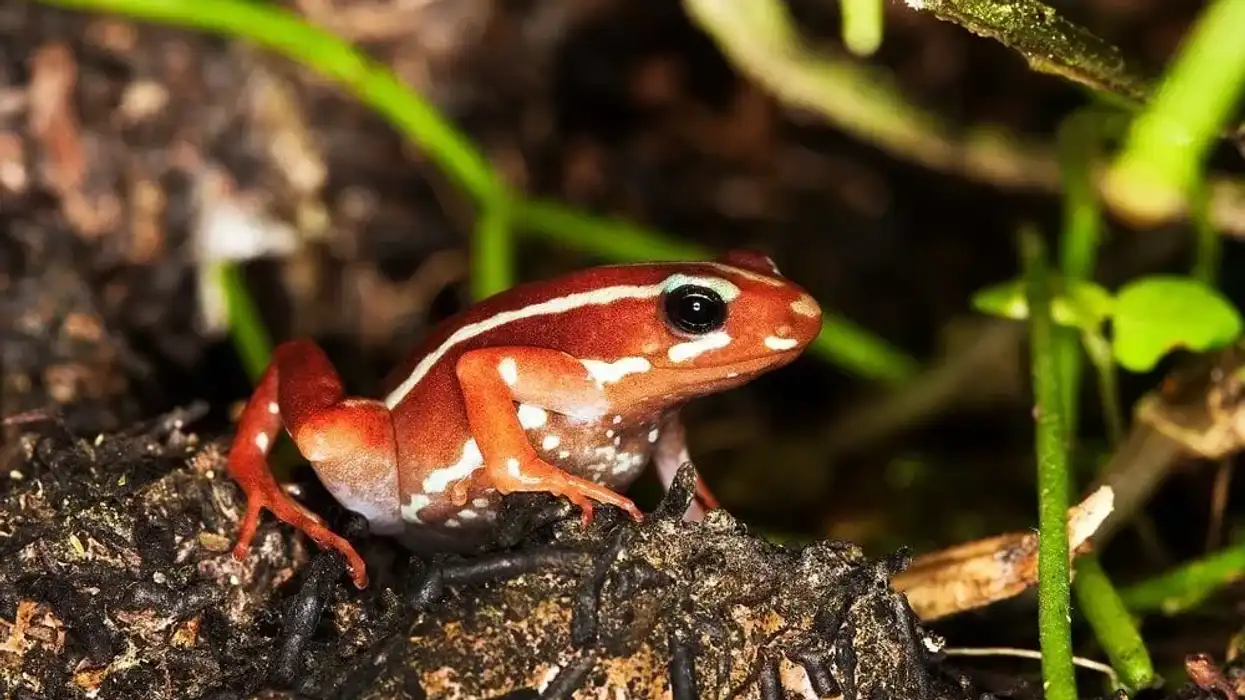Pselliopus barberi, known as orange assassin bug is a family of Reduviidae, which is commonly found along the southeastern and east coast of the United States. The assassin bugs are also known as bloodsuckers, kissing bugs, or coned nose bugs.
They are generally known to live in the wild among the grass, trees, shrubs, and flowers.
They are a large group of insect species, each with different features and colors to differentiate.
However, the orange assassin bugs are similar to the Zelus longipes milkweed assassin bug, while the kissing bugs look completely different from these two species. While both the orange assassin bug and milkweed assassin bug (Zelus longpipes) are both orange and similar insect species, they are not the same.
There are over 155 assassin bug species, and they are all similar by one specific characteristic, and that is, they are equipped with a pointed, curved mouth known as proboscis, which they use to stab and kill their prey, and also to defend themselves from predators.
For the most part, these insects are harmless to humans, but their bite can sting with pain. Many farmers and households use pest control to prevent these bugs from harming their crops and their bites.
These insects are highly predatory and spend most of their time hunting.
If you find insects amusing and interesting to learn about, you may also check out our articles on the stag beetle and click beetle facts.
Orange Assassin Bug Interesting Facts
What type of animal is an Orange Assassin Bug?
Orange assassin bugs are a type of insect.
What class of animal does an Orange Assassin Bug belong to?
The orange assassin bugs belong to the Insecta class of animals, order Hemiptera, family Reduviidae, and genus Pselliopus.
How many Orange Assassin Bugs are there in the world?
The total number of orange assassin bugs, of the order Hemiptera, present in the world is unknown.
Where does an Orange Assassin Bug live?
These assassin bugs live in the woodlands, forests, and grasslands. They nest in woodpiles and among the grasses.
The vast majority of these bug species are generally found in North America, but they can be found worldwide, in Europe, Central and South America, Africa, and parts of Asia, but a large variety of species can be found in North America.
What is an Orange Assassin Bug's habitat?
The assassin bug orange black habitat is, in a large number, in gardens, tree bark, woodpiles, animal nest, rainforests, rocky areas, and more to stay safe from harsh weathers and predators. Since the presence of these bugs is widespread, endless habitats are occupied by these species.
Who does Orange Assassin Bug live with?
This species of assassin bugs generally live in a group, while some live solitary lives.
How long does an Orange Assassin Bug live?
The lifespan of the orange assassin bug can range between 6-10 months. Most of them do not live even to 10 months since they get eaten by predators, and only a few survive to live for 10 months.
How do they reproduce?
Once breeding occurs, females can lay up to 300 eggs, usually on the stems and leaves of a plant. At birth, the nymph assassin bugs look like a tiny version of the adult insect, but they are born without wings.
The incubation period of the eggs and the development time of the baby insect differs greatly depending on the species of assassin bugs (order Hemiptera) that they belong to.
What is their conservation status?
The conservation status of the assassin bugs is Not Extinct, and their population seems to be stable. However, not much attention is paid to bugs since most people want to get rid of them due to their nature of destroying crops and biting habits.
Orange Assassin Bug Fun Facts
What does Orange Assassin Bug look like?
There are a variety of assassin bugs, and they differ in size, color, and shape. Like other assassin bugs, the orange assassin bugs have a pointed fang on the head, which is used to attack and kill insects for their food.
They have a light orange body with a black spot on both sides of the abdomen, with zebra stripes of black and orange legs. The legs and antennae are long and distributed with a brown or black band color.
The orange assassin bugs and milkweed assassin bugs have the same features and color distributions, but the milkweed assassin bug (Zelus longipes) have different colorations of their legs.
The assassin bugs' front legs have a glue-like substance to trap and hold prey. The orange assassin bug nymph does not have wings, but the nymphs develop them as they grow to an adult.

How cute are they?
The assassin bugs are quite scary and less cute to come in contact with, even though they may seem colorful and attractive to look at. It is not really cute for those who have developed a fear of bugs either.
How do they communicate?
It is unknown how the assassin bugs communicate with each other.
How big is an Orange Assassin Bug?
The orange and black assassin bug is known to be 10 times bigger than a bee.
How fast can an Orange Assassin Bug fly?
They are low-flying bugs that cannot fly great heights or for long distances, since they are small in size, and aren't equipped for a great flight speed.
How much does an Orange Assassin Bug weigh?
The weight of the orange assassin bug is unknown since they are tiny and small in size, so it is quite difficult to check their weight.
What are their male and female names of the species?
The male and female species of the assassin bugs do not hold separate names.
What would you call a baby Orange Assassin Bug?
The young of an orange assassin bug is known as a nymph. The nymphs are born without wings.
What do they eat?
The diet of an orange assassin bug consists of caterpillars, insects, worms, houseflies, and other smaller bugs.
Are they poisonous?
The Orange assassin bug bite should be avoided at all costs since they have the chance to transmit Chagas disease to humans. They also inject irritating venom to people who have been bitten by them.
Also, their feces may be contained with parasites, which can cause serious infections in humans. However, not all individuals get infected through their bite, but it can be painful, yet harmless.
Would they make a good pet?
It is unusual to raise bugs as pets.
Some bugs might be cute and friendly to pet without any poison present in them, but in the case of the orange or milkweed assassin bug, you must be very careful to avoid getting infected or be bitten, which is why many households prone to these bugs usually have their place under pest control.
Therefore, they would not be suitable to be a pet or even be kept at home.
Did you know...
This bug species is also known as kissing bugs not because they are cute and sweet, but because not only do they bite, but kiss their prey or living beings to suck out blood from them.
What happens if an assassin bug bites you?
Their bite is painful but harmless to humans. However, they should still be avoided since some of these bug species are known to spread Chagas disease, which can cause damage to our major organs and heart failure. Even though there is a low chance of this happening, it is always better to be safe and avoid them.










